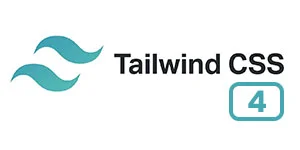
Free Digital Marketing Review
Elevate your online strategy with a personalised report and expert insights. Achieve your business goals faster!

Web Development News – WordPress 6.5
Released on April 2nd 2024, the latest annual release of WordPress, version 6.5, brings a few new features to the average user of the world’s most popular CMS, some exciting new features for developers, and some impressive optimisations to the core of WordPress.
The Font Library feature in WordPress 6.5, initially slated for release last year in WordPress 6.4, is a game changer for web developers and content creators. It provides a streamlined and intuitive way to manage the fonts used on the site, making it easy to install new custom fonts from either downloaded files or the massive collection available at Google Fonts, remove unused fonts, or activate them for use across the site, regardless of the theme being used.
One of the key benefits of the Font Library is its accessibility. It empowers users of all skill levels to customise the typography of their website without the need for complex coding or CSS knowledge. With a few simple clicks, users can add custom fonts or tap into the vast collection of Google Fonts, which offers hundreds of high-quality, open-source fonts.
Overall, the Font Library in WordPress 6.5 is a significant enhancement that simplifies font management, expands design possibilities, and promotes website consistency. It empowers users to create visually appealing and engaging web content easily.
In last year’s update to the block editor, patterns were added, which provide the ability to create sets of blocks that can be consistently replicated across multiple pages and maintain synchronisation of both style and content. In the new update, this functionality has been expanded with a new feature called Pattern Override, which establishes a consistent layout while offering flexibility for each pattern instance to showcase distinct content. For example, a testimonial layout can be designed and inserted into various pages or posts, ensuring the overall layout and styling remain uniform throughout while the specific testimonials are tailored to each page.
Behind the scenes, there are some exciting tweaks, including more robust revisions coming to templates and template parts, broader style revisions with plans for side-by-side, pagination, more detailed descriptions and more. In addition, there are over 110 performance-related enhancements. The page editor and site editor now load more rapidly than the earlier version of WordPress, and users will experience faster input processing speeds. The Site Editor is up to six times faster than WordPress 6.4.
Users will also benefit from over sixty enhancements in accessibility features. New capabilities will enable users to rectify various issues, including cursor focus, element positioning, and contrast settings.

Laravel 11
Laravel 11, the latest version of the popular PHP framework, has many new features and updates. The most notable change is the new minimum PHP version requirement of 8.2, which ensures that Laravel remains compatible with the latest and most secure versions of PHP.
One of the most exciting new features in Laravel 11 is access to Laravel Reverb. This new service provides real-time monitoring, debugging, and performance insights for Laravel applications. It helps developers identify and fix problems quickly and easily, ensuring their applications run at peak performance.
Another significant improvement in Laravel 11 is a streamlined directory skeleton. The new directory structure is designed to be more intuitive and easier to navigate, making it easier for developers to find and organise their code.
Laravel 11 introduces a set of new and exciting Traits and Methods. The Dumpable Trait stands out, offering coders an enhanced capability to decipher the results returned by the code. Additionally, the Once Method is introduced, which ensures that intricate code sequences are executed only once during each controller activation responsible for their execution.
Here is a more detailed list of some of the new features and updates in Laravel 11:
- New minimum PHP version requirement of 8.2
- Access to Laravel Reverb, a new service for real-time monitoring, debugging, and performance insights
- Streamlined directory skeleton
- Improved Eloquent ORM performance
- New Blade components and directives
- Support for Laravel Jetstream 3.0
- Updated security features
Overall, Laravel 11 is a major release that significantly improves the framework. These updates make it easier for developers to build and maintain high-quality web applications.

Tailwind 4 – Open sourcing the future
Tailwind 4 is the latest version of the utility-first CSS framework, which allows for the creation of custom websites without extensive CSS coding. Last Summer, an initial glimpse of the novel engine that would power the future of the Tailwind CSS framework was unveiled at Tailwind Connect. This innovative engine, known as Oxide, is specifically designed to enhance the developer experience and capitalise on the web platform’s recent advancements.
Initially, the projected launch date for this new engine was around Christmas as part of a Tailwind 3.x update. However, it quickly became evident that the update encompassed a more involved process. Despite the Tailwind team’s commitment to maintaining backward compatibility, the significant upgrades warranted a new platform version, leading to a delay and subsequent release as Tailwind 4.0.
The new engine is a fundamental rewrite of the codebase, incorporating all the expertise gained by the Tailwind team through the development and utilisation of the framework. This comprehensive rewrite has resulted in a remarkable increase in performance, with speeds up to ten times faster and a code reduction exceeding 35%. To achieve this, the framework’s most resource-intensive and parallelisable components have been migrated to Rust, while the core functionality remains in TypeScript for enhanced extensibility. Additionally, the Tailwind team has developed their specialised CSS parser, delivering double the speed compared to the previously used Post CSS. As a result, Lightning CSS is now the sole dependency required for Tailwind CSS 4. Until now, the team have focused entirely on the reimagined developer experience. The bulk of the work remaining to take this Alpha forward lies in adding backwards compatibility to the release and ensuring that people can update from Tailwind 3 to Tailwind 4 without needing to rework their web projects.
This new iteration of Tailwind CSS is currently in its alpha stage, rendering it unfit for deployment on live websites. Our diligent development team is monitoring this and other recent developments in web development to ensure that all our projects are cutting-edge and designed to withstand whatever the future might hold.

Need help with your website and marketing?
Book a FREE growth strategy session with our experts
Our award-winning team will review your website and marketing goals to provide you with crucial insight and advice.

4.9 STAR
Google reviews
With 10+ years of experience, Link Digital has helped hundreds of businesses to succeed online. We can help yours too!

